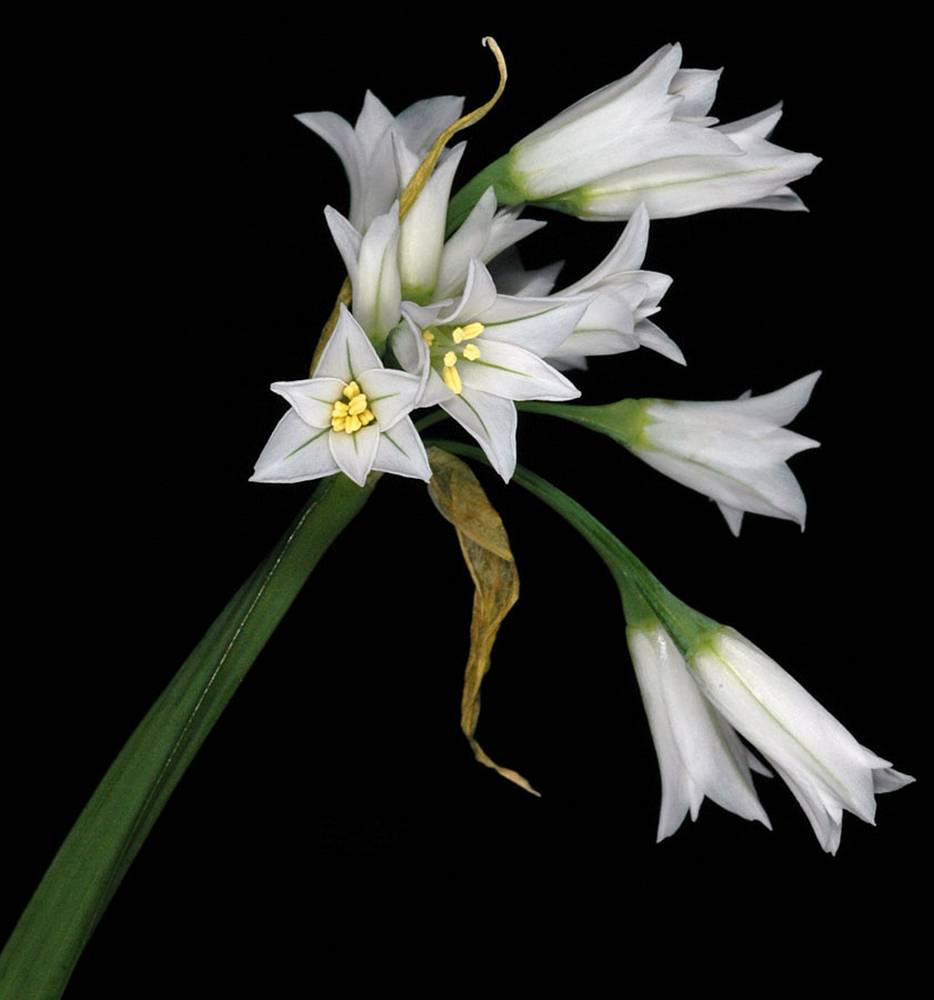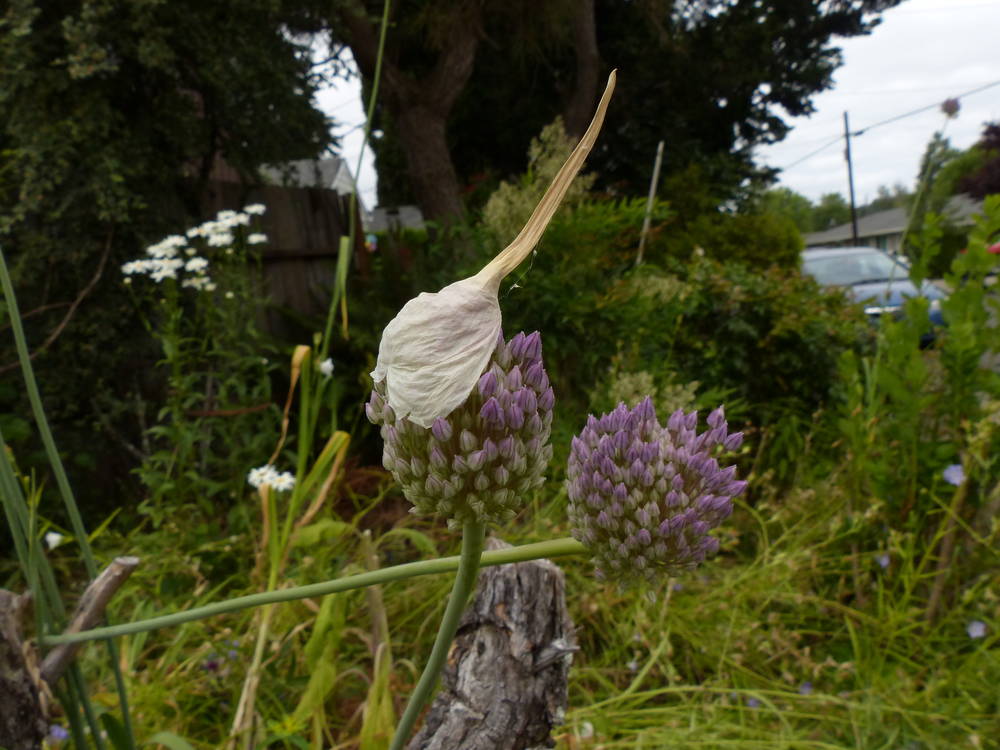Allium triquetrum
Allium ampeloprasum
three-corner leek
elephant garlic, wild leek
5–20+; increase bulbs absent or more or less equaling parent bulbs, never appearing as basal cluster; ovoid;
outer coats enclosing renewal bulbs; more or less translucent, obscurely cellular-reticulate; thin, membranous; meshes delicate;
cells vertically elongate, contorted; without fibers.
1–3+; variable; some poorly developed; others ovoid with 1–2 large bulbs and several bulbils at base;
outer coat enclosing 1 or more bulbs, membranous.
persistent, green at anthesis, 2–3;
blades solid; flat, not falcate; more or less keeled, 15–50 cm × 3–15 mm;
margins entire.
withering from tips by anthesis, 6–9;
blades solid; flat, channeled, 1–5 × 2–20(30) mm.
persistent, clustered; erect; solid, sharply 3-angled, 10–40 cm × 1–10 mm.
persistent; solitary; erect; hollow; terete, 45–180 cm × 3–7 mm.
persistent; lax; loose, 3–15-flowered; more or less 1-sided;
pedicels 15–25 mm;
spathe bracts 1–2.
persistent; erect; compact; to 500-flowered; few-flowered in variants with bulbils, globose;
pedicels 15–50 mm;
spathe bracts 3–5.
becoming pendent, 10–18 mm;
tepals erect to spreading, lanceolate; more or less equal, white with prominent green midrib;
margins entire;
apex acute;
stamens included;
ovary crestless;
stigma scarcely thickened, unlobed.
4–5.5 mm;
tepals erect, white, pink, or dark red;
outer tepals oblong-lanceolate;
margins entire;
apex obtuse, sometimes mucronate;
inner tepals narrowly ovate to spatulate;
margins entire;
apex obtuse;
stamens equaling perianth or exserted;
ovary crestless;
stigma scarcely thickened, unlobed.
=18.
Allium triquetrum
Allium ampeloprasum
Road ditches, lawns, and other disturbed moist sites. Flowering Apr–Jul. 400–2800 m. BR, BW, Col, ECas, Lava, Owy. CA; Europe. Exotic.
Allium triquetrum is cultivated for its attractive flowers. It readily escapes in south coastal Oregon and California and has potential to become invasive.
Roadsides and other disturbed areas. Flowering Apr–Jul. 0–50 m. Est. Occasionally escaped in North America; North Africa, Asia, Europe. Exotic.
This species may be conspecific with the cultivated leek A. porrum.
Nick Otting, Richard Brainerd, Barbara Wilson
Nick Otting, Richard Brainerd, Barbara Wilson





